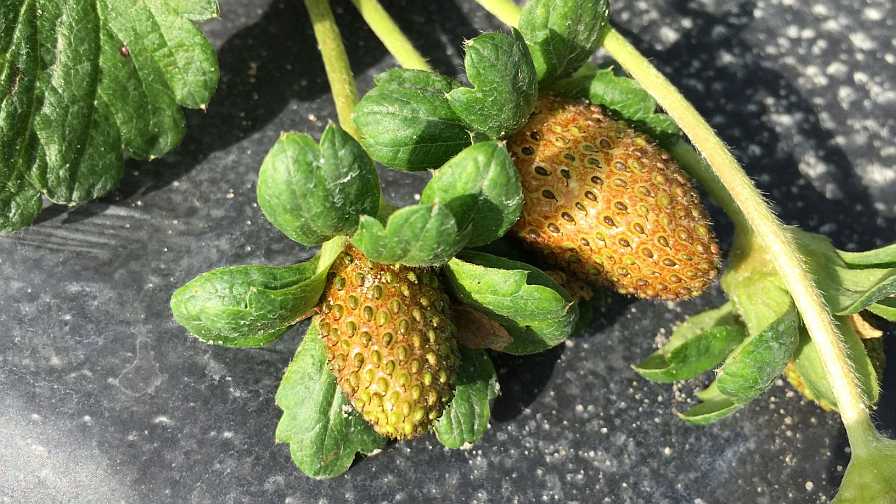Can Chilli Thrips Be Defeated by Using Less Pesticide?
If there’s a way farmers can use less crop protection inputs and still win the battle against bugs, then everybody would be doing it. Some plant pests are trickier to defeat though. But promising recent research from University of Florida scientists might have found a case where less pesticide use is more in beating chilli thrips (Scirtothrips dorsalis Hood) in local strawberry crops.
These tiny insects feed on new strawberry plants and cause bronzing and darkening of leaves, which stunts the plant’s growth and reduces yield. Florida blueberry growers also contend with this pest.
In a new study published by the Entomological Society of America, research shows chilli thrips tend to stay in one basic area for about two weeks, then move and infect nearby plants. This two-week window is where growers can take advantage.
“Our findings will reduce the overall input costs of strawberry production,” said Babu Panthi, a former doctoral student in entomology and nematology at the UF/IFAS College of Agricultural and Life Sciences and now a Postdoctoral Researcher at Oregon State University.
Specifically, the study’s findings mean Florida strawberry growers can reduce the number of insecticide applications by spraying the areas infested with chilli thrips and delay insecticide application by at least a week after they discover the bugs.
Additionally, the study’s results should help strawberry growers with their overall approach to mitigate pest damage, according to Sriyanka Lahiri, a UF/IFAS Assistant Professor of entomology at the Gulf Coast Research and Education Center in Balm.
“With very few effective products available for insecticide rotation, this approach will assist with integrated pest management practices to control chilli thrips and create opportunity to include biological control agents more effectively,” Lahiri said.
The chilli thrips is mainly just a pain for Florida strawberry growers – for now, Lahiri adds. Because it’s an invasive species that’s rapidly expanding its geographic range, strawberry growers in other U.S. states can learn and prepare to manage this pest in the future.










